Earth and Space Final Exam
1/240
There's no tags or description
Looks like no tags are added yet.
Name | Mastery | Learn | Test | Matching | Spaced |
|---|
No study sessions yet.
241 Terms
Geological Timeline
A chronological framework that organizes Earth's history into various units based on geological and paleontological evidence.
Eons
The largest divisions of geological time, spanning hundreds of millions to billions of years. Examples include the Hadean, Archean, Proterozoic, and Phanerozoic.
Eras
Subdivisions of eons, lasting tens to hundreds of millions of years. Examples include the Paleozoic, Mesozoic, and Cenozoic eras that represent significant periods in Earth's history characterized by distinct geological and biological events.
Periods
Subdivisions of eras, lasting tens of millions of years. Examples include the Cambrian, Jurassic, and Quaternary periods.
Epochs
Subdivisions of periods, lasting several million years. Examples include the Paleocene, Eocene, and Holocene epochs that mark significant evolutionary and climatic changes.
Index Fossils
Fossils of organisms that lived during a relatively short, specific time period and are used to identify and correlate the ages of rock layers
Relative Dating
A method of determining the age of a rock or fossil by comparing its placement with that of other rocks or fossils in a sequence
Principle of Superposition:
In an undisturbed sequence of rock layers, the oldest layers are at the bottom and the youngest layers are at the top.
Principle of Original Horizontality
The principle that sedimentary rock layers are originally deposited in horizontal layers.
Principle of Cross-Cutting Relationships
The principle that a geological feature, such as a fault or intrusion, is younger than the rocks it cuts through
Principle of Unconformities
Gaps in the geological record that represent periods of erosion or non-deposition
Principle of Inclusions
Fragments of one rock type enclosed within another rock type, indicating that the inclusion is older than the surrounding rock
Fossils
Preserved remains or traces of ancient organisms
Mineral Replacement
A fossilization process where the original material of an organism is replaced with minerals
Recrystallization
A process where the original minerals in a fossil are dissolved and reformed into new minerals
Mold and Cast
A type of fossilization where an organism leaves an impression (mold) that is later filled with minerals (cast)
Carbon Film
A thin layer of carbon residue left by an organism, often preserving fine details
Trace Fossil
Indirect evidence of an organism's presence, such as footprints, burrows, or feces
Body Fossil
Fossils that consist of the actual remains of an organism, such as bones or shells
Original Preservation
Fossils that retain their original structure and composition
Altered Hard Parts
Fossils where the hard parts of an organism, like bones or shells, have undergone chemical changes
Continental Drift Theory vs Theory of Plate Tectonics
Continental Drift Theory, proposed by Alfred Wegener, suggested continents were once joined and have since drifted apart based on fossil and geological evidence. Plate Tectonics, developed later, expanded on this by explaining the movement of Earth's lithospheric plates driven by mantle convection, providing a more comprehensive understanding of geological phenomena.
Milankovitch Theory
This theory describes how variations in Earth's orbit and axial tilt (eccentricity, obliquity, and precession) affect climate patterns over thousands of years, contributing to cycles of ice ages and warmer periods. Greater tilt angles result in more extreme seasonal variations, while smaller angles lead to milder seasons, during periods of high eccentricity, summers can be warmer and winters colder in one hemisphere, depending on the timing of perihelion and aphelion
Absolute vs Relative Dating
Absolute dating provides a specific age or date range for an object using methods like radiocarbon dating, while relative dating determines the age of an object in relation to other objects or layers, without providing a specific date
How did life start on the Earth?
Hydrothermal Vents: Life may have originated at hydrothermal vents on the ocean floor, where mineral-rich water provides the necessary chemicals and energy for the formation of organic molecules
Primordial Soup: This theory suggests that life began in a "primordial soup" of organic molecules, possibly sparked by lightning or ultraviolet radiation. The famous Miller-Urey experiment demonstrated that amino acids, the building blocks of life, could form under conditions thought to resemble early Earth's atmosphere
Panspermia: This hypothesis proposes that life, or at least the building blocks of life, came to Earth from space via comets, meteorites, or cosmic dust
Cause of Extinction Events
Extinction events can be caused by various factors, including volcanic eruptions, asteroid impacts, climate change, and human activities. The "Big Five" mass extinctions were driven by such catastrophic events
Principle of Uniformitarianism vs. Catastrophe
Uniformitarianism, proposed by James Hutton, suggests that geological processes occurring today have been constant over time, shaping Earth's surface gradually. Catastrophism, on the other hand, posits that Earth's features were formed by sudden, short-lived, and violent events
Mineral
A naturally occurring, inorganic solid with a definite chemical composition and a crystalline structure
Rock
A solid aggregate of one or more minerals or mineraloids
Metallic Mineral
Minerals that contain metal elements in their chemical composition and can be economically extracted
Tailings
Residue or waste material left after the extraction of valuable minerals from ore
Industrial Mineral
Non-metallic minerals used in various industries for their physical and chemical properties
Gem
A precious or semi-precious mineral that is cut and polished for use in jewelry
Synthetic Mineral
Man-made minerals created to mimic natural minerals
Mineral Deposit
A concentration of minerals in the Earth's crust that is economically viable to extract
Ore
A naturally occurring rock or mineral that contains a valuable substance that can be extracted for profit
Hydrothermal Fluids
Hot, mineral-rich water that circulates through rocks, often leading to the formation of mineral deposits
Placer Ores
Mineral deposits formed by the concentration of valuable minerals in river or beach sediments
Bedrock
The solid rock underlying loose deposits such as soil or alluvium
Aggregates
Materials composed of sand, gravel, crushed stone, or slag used in construction
Streak
The color of a mineral in powdered form, usually obtained by rubbing the mineral on a streak plate
Hardness (Moh’s Hardness Scale)
A measure of a mineral's resistance to scratching, ranked on the Mohs scale from 1 (talc) to 10 (diamond)
Lustre
The way a mineral reflects light from its surface
Adamantine
A type of lustre that is exceptionally brilliant, like that of a diamond
Earthy
A dull, non-reflective lustre resembling soil
Pearly
A lustre that resembles the iridescence of a pearl
Resinous
A lustre that looks like resin or amber
Silky
A lustre that appears fibrous, like silk
Vitreous
A glassy lustre
Metallic
A lustre that resembles metal
Effervescence
The reaction of a mineral with acid, producing bubbles of gas
Crystal Habit
The characteristic shape or form of a mineral's crystals
Specific Gravity
The ratio of a mineral's density compared to the density of water
Lava
Molten rock that has erupted onto Earth's surface
Magma
Molten rock beneath Earth's surface
Bowen’s Reaction Series
A sequence that describes the order in which minerals crystallize from cooling magma
Extrusive
Igneous rocks formed from lava that cools quickly on Earth's surface (can’t see the different grains)
Intrusive
Igneous rocks formed from magma that cools slowly beneath Earth's surface (can see the different grains)
Felsic
Igneous rocks rich in feldspar and silicon, typically light-colored
Mafic
Igneous rocks rich in magnesium and iron, typically dark-colore
Lithification
he process of turning sediment into rock through compaction and cementation
Clastic Rocks
Sedimentary rocks composed of fragments of pre-existing rocks
Bioclastic
Sedimentary rocks formed from the remains of living organisms
Chemical Sedimentary
Rocks formed from the precipitation of minerals from water
Organic
Sedimentary rocks formed from the accumulation of plant or animal debris
Contact Metamorphism
Metamorphism caused by heat from nearby magma
Regional Metamorphism
Metamorphism affecting large areas of the crust, typically associated with mountain building
Hydrothermal Metamorphism
Metamorphism caused by hot, mineral-rich fluids
Foliated
Metamorphic rocks with a layered or banded appearance
Non-Foliated
Metamorphic rocks without a layered or banded appearance
Igneous Rock Cycle
Formed from the cooling and solidification of magma or lava.
Sedimentary Rock Cycle
Formed from the compaction and cementation of sediments
Metamorphic Rock Cycle
Formed from the alteration of existing rocks due to heat and pressure
Mineral Characteristics
Naturally Occurring: Formed by natural processes.
Inorganic: Not made by biological processes.
Solid: Maintains a definite shape and volume.
Definite Chemical Composition: Has a specific chemical formula.
Crystalline Structure: Atoms are arranged in an orderly pattern
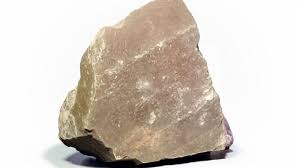
Quartzite’s Parent Rock
Sandstone
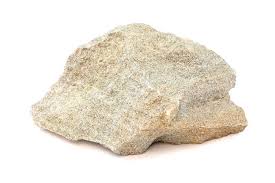
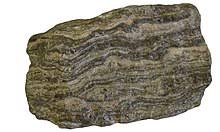
Gneiss Parent Rock
Granite or Schist (picture is granite)
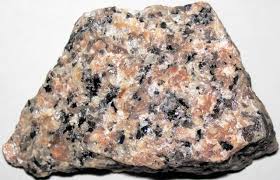
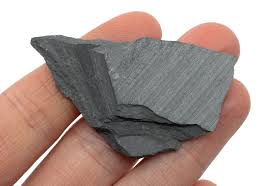
Slate Parent Rock
Shale
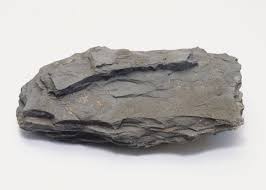
Comparing Limestone, Marble, Granite for Building Materials or Statues
Limestone: Sedimentary rock, easily carved, used in buildings and statues but less durable.
Marble: Metamorphic rock, formed from limestone, more durable and aesthetically pleasing, used in sculptures and buildings.
Granite: Igneous rock, very hard and durable, used in construction and monuments
Relationship Between Cooling Rates and Mineral Size
Slow Cooling: Forms large crystals (e.g., granite).
Fast Cooling: Forms small or no crystals (e.g., basalt)
Example of How a Mineral or Earth Material is Used and Why
Quartz: Used in glassmaking due to its high silica content and durability
Halite (Salt): Used in food seasoning and preservation due to its ability to enhance flavor and inhibit bacterial growth. It's also used in de-icing roads in winter
Talc: Commonly used in baby powder and cosmetics for its softness and ability to absorb moisture. It's also used as a lubricant and in the production of ceramics
Gypsum: Used in the production of drywall and plaster because it can be easily shaped and hardens quickly. It's also used in cement and as a soil conditioner
Graphite: Used in pencils due to its ability to leave marks on paper. It's also used as a lubricant and in batteries for its excellent conductivity
Copper: Widely used in electrical wiring and plumbing due to its excellent conductivity and malleability. It's also used in coins and various alloys
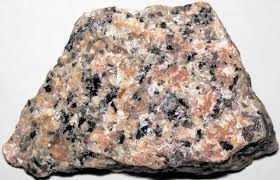
Granite
Coarse-grained, intrusive igneous rock
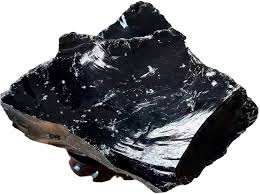
Obsidian
Glassy, extrusive igneous rock.
Rhyolite
Fine-grained, extrusive igneous rock.
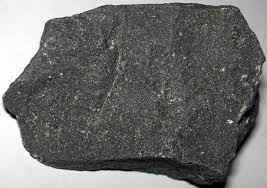
Basalt
Fine-grained, extrusive igneous rock.
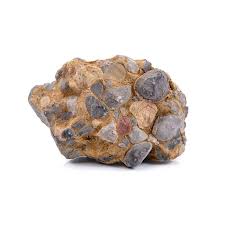
Conglomerate
Clastic sedimentary rock with rounded fragments.
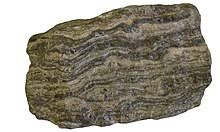
Gneiss
Foliated metamorphic rock
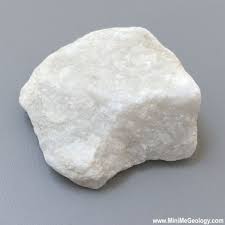
Marble
Non-foliated metamorphic rock
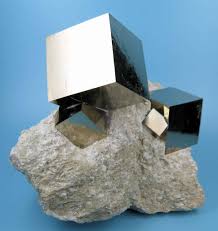
Pyrite
Metallic luster, known as "fool's gold."
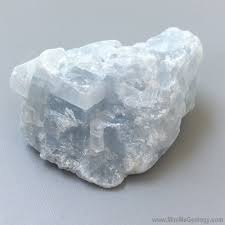
Calcite
Effervesces with acid
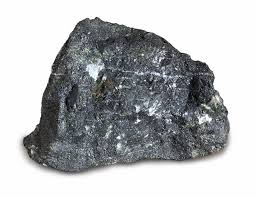
Magnetite
Magnetic properties
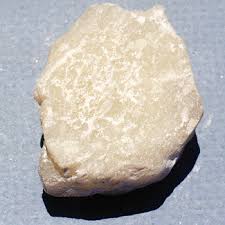
Talc
Softest mineral on Mohs scale.
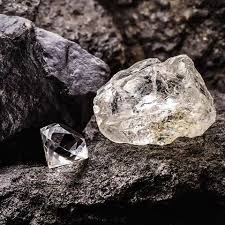
Diamond
Hardest Mineral on Earth
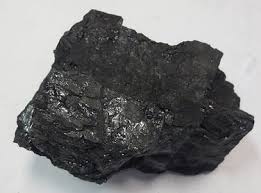
Bituminous Coal
Organic sedimentary rock.
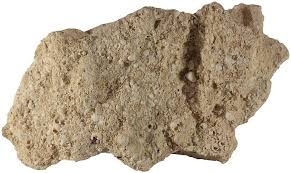
Coquina
Bioclastic sedimentary rock
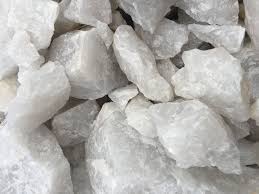
Quartz
Vitreous luster
Mineral Properties
Effervescence: Reaction with acid (e.g., calcite).
Magnetism: Attraction to magnets (e.g., magnetite).
Metallic Lustre: Reflects light like metal (e.g., pyrite).
Moh’s Scale: Talc (1) is the softest, diamond (10) is the hardest.
Adamantine: Brilliant luster (e.g., diamond)
Example of Felsic Rocks
Granite, rhyolite
Example of Mafic Rocks
Basalt, gabbro
Examples of Intrusive rocks
Granite, gabbro
Example of Extrusive Rocks
Basalt, obsidian